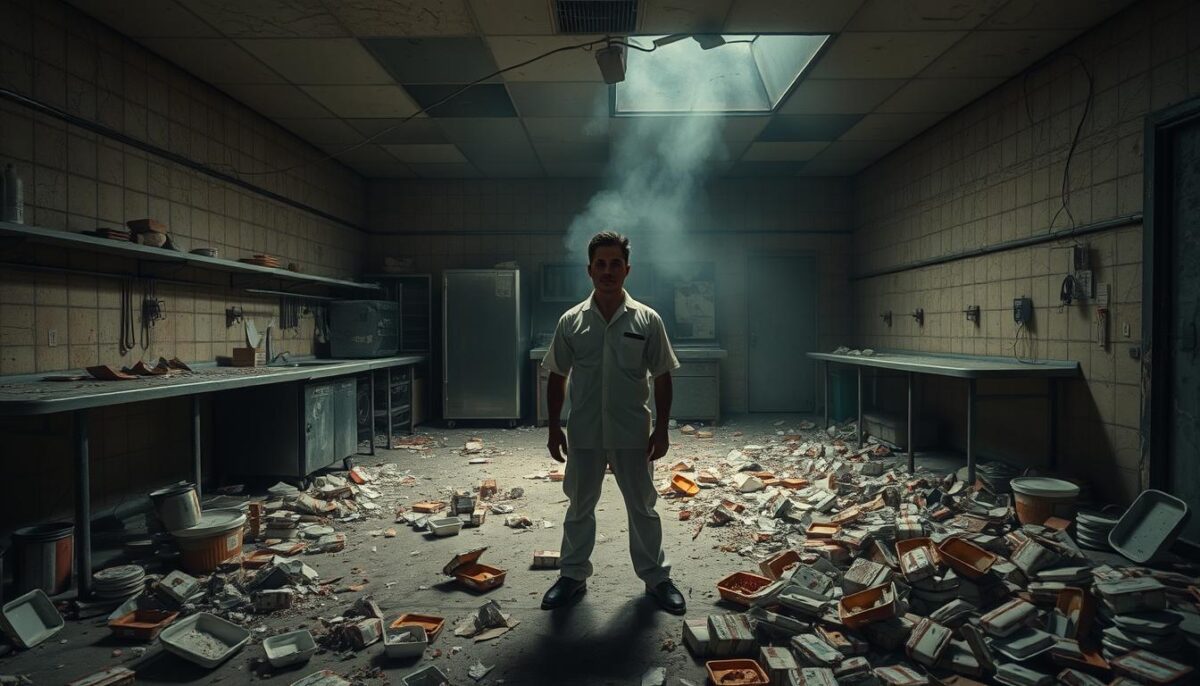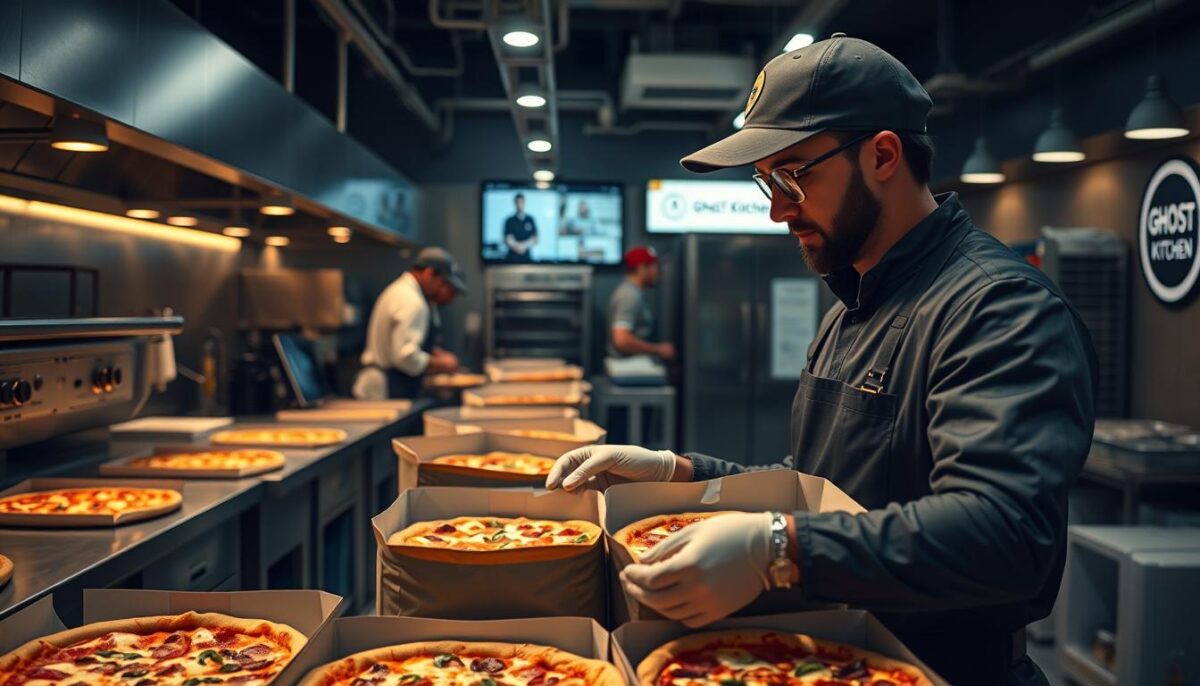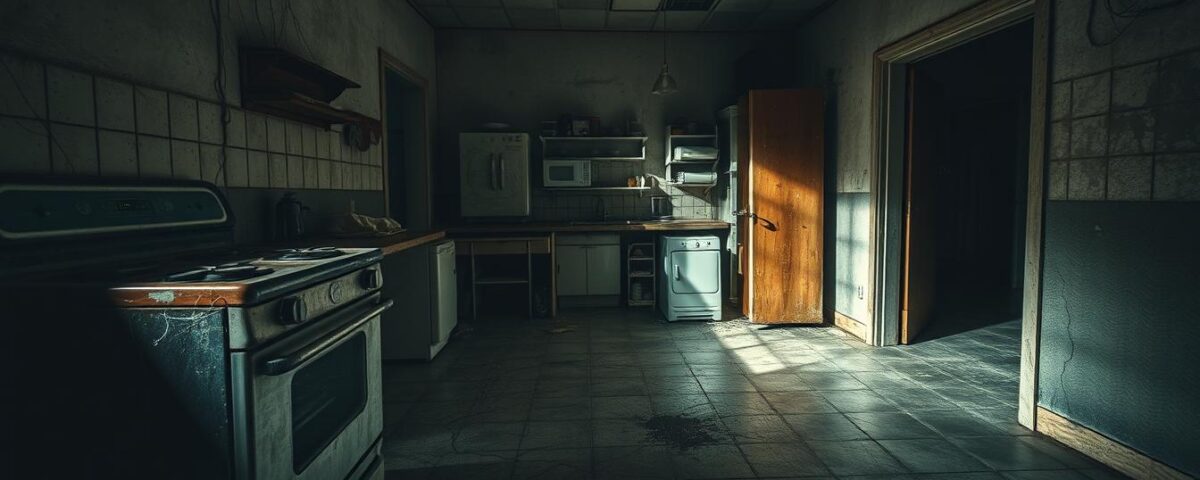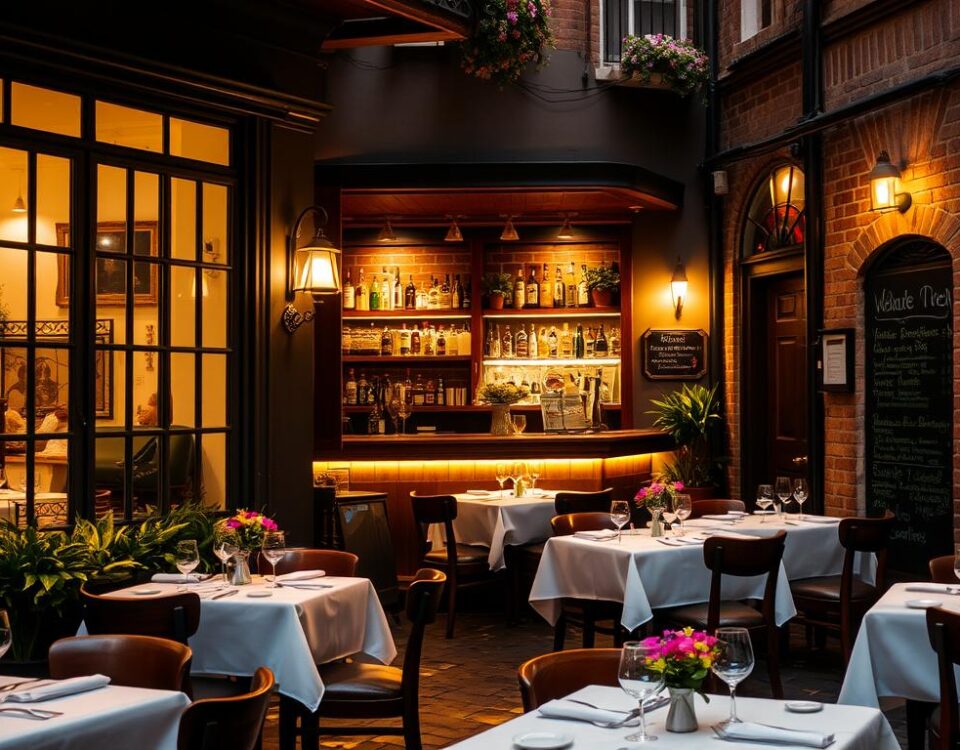
6 Common Supplier Traps That Are Costing You Thousands
August 30, 2025
How Missing One Document Can Kill Your Restaurant Launch
August 31, 2025The rise and fall of ghost kitchens has been a remarkable tale of innovation and recklessness. During the pandemic, these virtual eateries boomed, with companies like Kitchen United and Reef Kitchens leading the charge. However, as delivery demand normalized, the unsustainable business models of many ghost kitchens were exposed.
As Alon Lagstein, counsel at law firm Carlton Fields, noted, “Ghost kitchens were kind of a victim of their own success. The pandemic gave the business model a false positive.” With too much excitement and too little attention to operational issues, many ghost kitchens burned out. What can we learn from these failure stories, and how can entrepreneurs avoid similar pitfalls?
Key Takeaways
- Understand the importance of a sustainable business model in the ghost kitchen industry.
- Recognize the challenges of maintaining quality control in a virtual kitchen setting.
- Learn from the experiences of high-profile ghost kitchen failures, such as Kitchen United.
- Identify the key factors that contributed to the success of thriving ghost kitchens.
- Discover the lessons that can be applied to future entrepreneurial ventures in the food delivery space.
The Rise and Fall of Ghost Kitchens
The pandemic created a perfect storm that catapulted ghost kitchens to the forefront of the food industry. As lockdowns forced consumers to rely heavily on food delivery services, ghost kitchens experienced explosive growth, creating what industry experts now call a “false positive” for the business model.
The Pandemic-Fueled Boom
During this period, many ghost kitchen operators saw their revenue triple or quadruple, attracting significant venture capital investment and fueling rapid expansion plans. The demand for delivery grew so quickly that ghost kitchens were able to capitalize on the trend, promising to disrupt traditional restaurant models by focusing exclusively on delivery. As a result, the ghost kitchen business model gained popularity, with many entrepreneurs and investors jumping on the bandwagon.
| Year | Revenue Growth | Number of Ghost Kitchens |
|---|---|---|
| 2020 | 200% | 1000 |
| 2021 | 150% | 2000 |
| 2022 | 50% | 2500 |
The Post-Pandemic Reality Check
However, as the pandemic subsided, many ghost kitchen operators faced a harsh reality as delivery demand normalized and operational issues became apparent. The artificial demand created during the pandemic masked fundamental operational issues and unsustainable business models that would later lead to high-profile failures. The shift in consumer behavior post-pandemic revealed that many ghost kitchen operations had scaled too quickly without solving core business challenges.
As the industry experts began to assess the viability of ghost kitchens as standalone businesses, it became clear that the initial excitement had given way to a more sober assessment. The post-pandemic period brought a reality check, and many ghost kitchen operators were forced to re-evaluate their business models and strategies.
Major Ghost Kitchen Failure Stories
The ghost kitchen industry has witnessed several high-profile failures, offering valuable lessons for entrepreneurs. These stories highlight the challenges faced by ghost kitchen operators, from operational issues to financial mismanagement.
Kitchen United’s Pivot and Kroger Experiment
Kitchen United’s decision to terminate their retail experiment with Kroger Supermarkets and pivot back to an asset-light software strategy was surprising, given that Kroger was part of a $100 million investment in Kitchen United just over a year ago. This high-profile experiment failed to meet financial expectations, highlighting the difficulties of integrating ghost kitchens into traditional retail environments.
The failure of Kitchen United’s partnership with Kroger underscores the importance of aligning business models with market realities. Despite significant investment, the partnership struggled to achieve sustainable unit economics, ultimately leading to its demise.
Reef Kitchens’ $700 Million Stumble
Reef Kitchens received over $700 million in funding from Softbank and signed up major brands like Wendy’s to locate in over 500 vessels. However, poor execution led to closures, with quality control issues being a major factor. The operational model, which relied on 2-3 staff servicing up to 6 different food brands from cramped vessel spaces, proved to be flawed.

The Reef Kitchens case study reveals how even substantial funding couldn’t save a ghost kitchen operation from its own operational shortcomings. The collapse of their partnership with Wendy’s, which had planned to open over 500 locations, was a significant blow.
Crave Delivery’s Expensive Miscalculation
Crave Delivery raised over $7 million in seed funding and built a $3 million location in Boise, but failed to generate sufficient revenue to sustain operations. Despite their upscale approach to delivery, the concept proved to be unsustainable, highlighting the importance of achieving a balance between investment and revenue generation.
Other Notable Ghost Kitchen Failures
Other ghost kitchen operators have also struggled to achieve success, with common issues including unsustainable cost structures, quality control challenges, and real estate market shifts. These failures demonstrate the need for ghost kitchen operators to prioritize operational excellence and adapt to changing market conditions.
- Unsustainable cost structures plagued many ghost kitchen operations, leading to financial strain.
- Quality control challenges proved to be a major issue for ghost kitchens, affecting customer satisfaction and loyalty.
- Real estate market shifts impacted the viability of ghost kitchen locations, with some operators struggling to adapt.
These case studies show a pattern where ghost kitchen operators prioritized rapid expansion over operational excellence, ultimately leading to their downfall. By examining these failures, entrepreneurs can gain valuable insights into the challenges of operating a successful ghost kitchen.
Why These Ghost Kitchen Models Failed
The collapse of many ghost kitchen businesses can be attributed to a combination of operational and financial issues. Several ghost kitchen models failed due to unsustainable cost structures and quality control issues.
Unsustainable Cost Structures
Ghost kitchens faced a complex cost structure that ultimately doomed many operations. The multiple layers of fees included delivery fees to third-party services, higher prices for food items, fees paid to the ghost kitchen operator, and percentage rent. This created a “triple tax” on profitability, squeezing profit margins from all sides.
| Cost Component | Description | Impact on Profitability |
|---|---|---|
| Delivery Fees | Fees paid to third-party delivery services | Reduced profit margins |
| Food Costs | Higher prices for food items due to smaller scale | Increased operational expenses |
| Operator Fees | Fees paid to the ghost kitchen operator for facilities and management | Additional overhead |
| Percentage Rent | Rent based on a percentage of sales | Limited upside potential |
Quality Control Challenges
Quality control emerged as a critical weakness in ghost kitchen operations. Preparing food that travels well requires specialized expertise that many ghost kitchen operators lacked. Moreover, the staffing model in many ghost kitchens created fundamental quality issues, as the same workers prepared multiple cuisines without proper training in each brand’s standards.
Real Estate Market Shifts
The real estate market shift after the pandemic created unexpected competition for ghost kitchens. Second-generation restaurant spaces became available at significant discounts after pandemic closures, making industrial ghost kitchen spaces less attractive.
Impatient Capital and Scaling Too Quickly
The impatient capital problem reveals how venture funding created pressure for rapid scaling before operational issues were solved, forcing growth at the expense of unit economics. This rapid scaling without addressing fundamental operational challenges led to the downfall of many ghost kitchen models.
In conclusion, the combination of unsustainable cost structures, quality control challenges, real estate market shifts, and impatient capital created a perfect storm that made most ghost kitchen models fundamentally unsustainable despite significant investment.
Success Stories: What’s Working in the Ghost Kitchen Industry
Amidst the failures, successful ghost kitchen models have carved out their niche. The ghost kitchen industry is not just about failed experiments; there are inspiring success stories that offer valuable insights into what works. These success stories reveal that with the right approach, ghost kitchens can be profitable and sustainable.
The Pizza Delivery Model
The pizza delivery model is a prime example of a successful ghost kitchen concept. Companies like Domino’s have been perfecting this model for over 60 years. They operate as fully integrated concepts, controlling every aspect from ordering to delivery. This vertical integration eliminates multiple layers of costs, making the model more efficient. By relying on in-house drivers rather than third-party aggregators, pizza delivery companies have managed to maintain high-quality service while keeping costs under control.

ClusterTruck’s Vertical Integration Approach
ClusterTruck, launched in 2016, is a rare example of a ghost kitchen that achieved profitability almost immediately. Their success can be attributed to their vertically integrated approach and proprietary technology platform, Empower Delivery. This platform creates efficiencies in labor, delivery, and customer acquisition, leading to lower costs and higher customer lifetime value (LTV). By controlling the entire customer experience, ClusterTruck was able to differentiate itself in a crowded market.
Chinese Food Delivery’s Sustainable Model
The Chinese food delivery model offers another instructive example of a successful ghost kitchen. This model focuses on small facilities that serve a limited radius, often using family members for delivery. The familiarity of Chinese cuisine and the efficiency of family-run delivery systems contribute to its success. By maintaining a small radius of operation, these ghost kitchens can ensure freshness and quality, which are crucial for customer satisfaction.
These success stories share a common thread: they maintain control over the entire customer experience. Whether it’s through vertical integration or focused operational strategies, successful ghost kitchens prioritize operational excellence and customer satisfaction. By learning from these examples, future ghost kitchen ventures can develop more sustainable business models.
Lessons for Future Ghost Kitchen Success
The future of ghost kitchens depends on a deep understanding of the intricacies of thefood industryand technological efficiency. As we’ve seen,ghost kitchensare, at their core,restaurantsthat require a focus on unit economics and operational excellence.
To succeed, futureghost kitchenconcepts should prioritizevertical integration, controlling the customer experience from ordering to delivery to maintain quality and manage costs. The current high-interest rateenvironmentdemands a shift in focus from growth to profitability, with investors expecting positive cash flow.
Thetechnology approachforghost kitchensneeds to be holistic, rather than piecemeal. Adding multiple software solutions creates complexity without solving fundamental operational challenges. Despite past failures,consumerdemand for convenient delivery remains strong, suggesting opportunities for well-executedghost kitchenconcepts.
The most promising path forward combines the operational discipline of traditionalrestaurantswith the technological efficiency of modern delivery platforms. Success in theghost kitchen industryrequires patience, operational excellence, and a commitment to quality.
FAQ
What is a ghost kitchen, and how does it operate?
A ghost kitchen, also known as a virtual or cloud kitchen, is a cooking facility that produces food solely for delivery or pickup, without a physical dining space. It operates by partnering with food delivery companies or using its own delivery infrastructure to get food to consumers.
What are the primary challenges faced by ghost kitchens?
The main challenges include maintaining quality control, managing cost structures, and adapting to shifts in the real estate market. Additionally, ghost kitchens must navigate the complexities of food delivery and consumer expectations.
How do ghost kitchens generate revenue?
Ghost kitchens generate revenue through the sale of food via delivery or pickup, often partnering with third-party delivery services or using their own delivery models. Some successful ghost kitchens have also adopted vertical integration approaches to increase profitability.
What can be learned from ghost kitchen failure stories?
By examining failure stories, we can identify key lessons, such as the importance of sustainable cost structures, effective quality control, and adaptability to changing market conditions. These insights can help inform strategies for future success in the industry.
Are there any successful ghost kitchen models?
Yes, certain models have achieved success, such as the pizza delivery model, which has proven effective for many ghost kitchens. Other examples include ClusterTruck’s vertical integration approach and Chinese food delivery services, which have developed sustainable models.
What is the future outlook for the ghost kitchen industry?
The industry is expected to continue evolving, with a focus on sustainable business models, quality control, and adaptability to changing consumer preferences and market conditions. By learning from past successes and failures, ghost kitchens can better navigate the challenges ahead.



